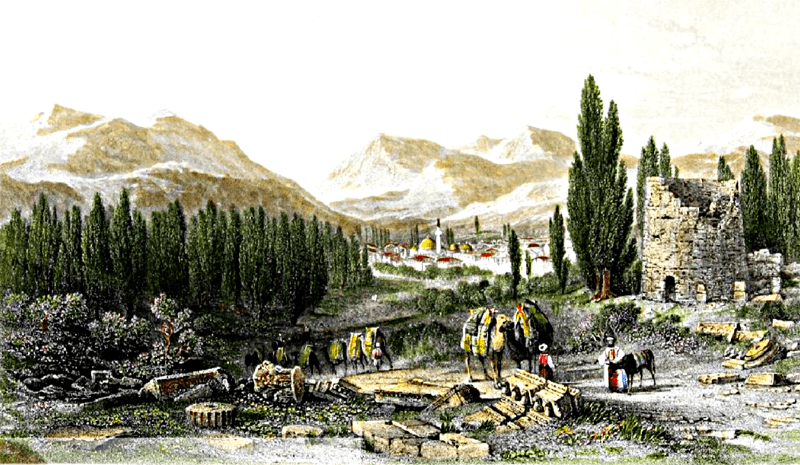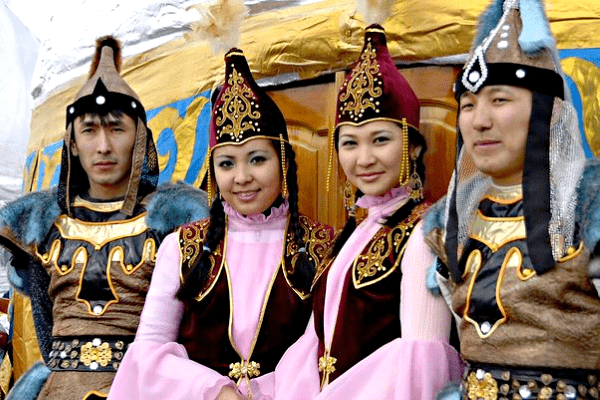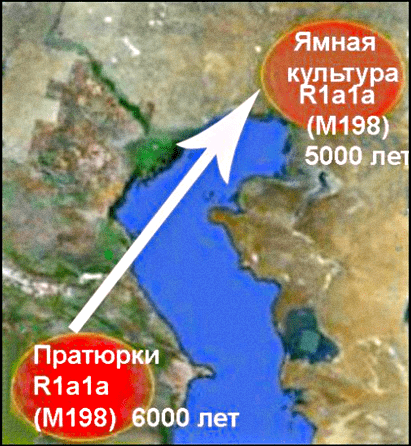A stone sculpture of the Early Turkic period, 1300 years old, was found about 250 km from Turkestan in southern Kazakhstan (photo: AA)

There is still no consensus among scientists about the initial stage of origin of modern Turkic peoples. For example, some scientists believe that the ancestral homeland of the ancient Turks was in the Altai. Others place it in the areas adjoining the Black and Caspian seas from the north, the third — in West Asia, and the fourth — in the territories to the west and east of the Urals. Some scientists write that the ancestors of the modern Turks were originally Mongoloid, while others claim that the ancient Turks were Caucasoid. Some believe that for the first time Turkic tribes appeared in Eastern Europe only in the middle of the first millennium AD, others write about the distant kinship of the ancient Turks with Sumerians, Etruscans and American Indians.
Scientists believe that once in the distant past there was a single Turkic fore-language, which was spoken by common ancestors of all modern Turkic peoples. Then some time passed and the disintegration of the ancient Turkic community began, i.e. separate ancient Turkic tribes began to gradually leave the territory of the ancestral homeland.
Further, the Turkic tribes that left the ancestral homeland, having found a new territory for their existence, and in some cases mixed with the aboriginal population, began to create new Turkic languages over time. Thus, new Turkic languages appeared, which differed from the ancient Turkic language, but were understandable to neighboring Turkic peoples. This is how areal Turkic vocabulary was born, i.e. the vocabulary which is known not to all modern Turkic peoples, but only to separate Turkic groups living in a certain adjacent territory.
Supporters of the Nostratic hypothesis believe that the ancient Turks (creators of the Athanasian and Andronovo cultures) were Caucasoids, who in the Neolithic period migrated from the territory of West Asia to the steppe expanses of South Siberia and Mongolia, where they mixed with the Mongoloid population.

Ancient Thyatira, (Ahisar, Turkey), ancient engraving by Allom, 1838.
Geneticists have confirmed the antero-Asiatic origin of the Pratyurks. The Europoid haplogroup R1a1 is also found in almost all modern Turkic peoples:
Khotons (Mongolian-speaking Uighurs) — 82.0 %,
Kyrgyz — 63.0%
Shorians — 58,8 %
Altaians — 53,0 %
Tatars — 34,1 %
Chuvashs — 31,6 %
Uzbeks — 30.0%
Uighurs — 28,6 %
Khakasses — 28.3%
Karachais — 27,54 %
Bashkirs — 26.3%
Balkars — 25,74 %
Azerbaijanis — 19.0%
Karakalpaks — 18.2%
Tuvinians — 14.0%
Kumyks — 13.2%
Gagauzians — 12.5%
Turks — 6.9%
Turkmen — 6.7%
Kazakhs — 4.0%
Yakuts — 3,2%

As it is known at Mongols haplogroups C (M217) and N1a (M128) dominate, at Koreans — D4, at Japanese — D2, Chinese — O (M175).
Geneticists have revealed that «East Asian» haplogroups (C, N, D, O), inherent to Mongoloid peoples, are not found in «western» Turkic peoples (Turks, Azerbaijanis, Turkmens, Gagauz, Karachais, Balkars, Kumyks).
Thus, scientists assume that haplogroup R1a1 was originally an ancient Turkic haplogroup. And the fact that all the men buried in Eurasian burial mounds have this haplogroup is another proof that the so-called Andronovtsy, Afanasyevtsy, Tagar, «Pazyryktsy», Scythians, Sarmatians, Alans were Turkic peoples and are the ancient ancestors of modern Turks.
Most foreign and Russian geneticists write about it in their studies. For example, Russian researchers V.N. Kharkov, L.M. Novikova, O.V. Shtygasheva, F.A. Luzina, I.Y. Khitrinskaya, V.G. Volkov, V.A. Stepanov in the article «The gene pool of Khakasses and Shorians according to Y-chromosome markers: common components and genetic structure of genera» write:
«The presence of haplogroups R1a-Y43850 and R1a-Y43109 in the Khakasses is due to the Caucasoid substrate, on the basis of which this ethnos was formed. In archaeological terms, at the latest stage of development, the carriers of this component correspond to the Tagar culture, represented on the territory of Khakassia by numerous burial mounds. It is interesting that the Asian variant of haplogroup R1a, widely spread in the populations of South Siberia, turned out to be represented in the Khakass and Shorians by several different sublineages, which divided very long ago. At the same time, none of these subhaplogroups shows a star-shaped phylogeny of haplotypes, reduced diversity and traces of the founder effect. Apparently, this indicates a significant size of the effective population size of ancient Caucasoids and Turks, which introduced these components into the gene pool of modern Khakasses and Shorians» [Genetics, 2020, T. 56, No. 7, pp. 826-833].
And in another study on the genetics of the population of South Siberia «Evolution and phylogeography of human Y-chromosome lineages» geneticists V.A. Stepanov, V.N. Kharkov, and V.P. Puzyrev write:
«The largest part in the spectrum of variants of the Y-chromosome in Southern Siberia is occupied by R1a1 (from 12% in Tuvinians to 55% in Southern Altaians), the carriers of which — probably the ancient Europeanoid population of this region — penetrated here with migrations across the steppe zone of Northern Eurasia in the epoch from the early Neolithic to the Bronze Age.»
Archaeologists have identified a complex of interrelated and relatively mobile cultures living in antiquity on the territory of the Eurasian steppes (kurgan culture).

Reconstruction of a burial in a typical Scythian barrow
The Turkic pastoralists from the end of the Neolithic and in the Iron Age brought a previously unknown culture to the expanses of Eurasia, which had a number of specific features, such as burial mounds, domesticated animals (sheep, goat, cattle, horse, camel) and metallurgy. Almost all samples from Bronze and Iron Age burial mounds in the South Caucasus, as well as in the Black Sea and Caspian burials (Yamnaya, Katokomb, Andronovo), up to the burials of the Afanasyevs in the Krasnoyarsk region in southern Siberia and the Tarim people in present-day Uyguria, belonged to populations with the common haplogroup R1a1-M17. That also confirms the migrations of Caucasoid ancient Turks from the territory of the South Caucasus to the East.

In the 4th millennium B.C. a part of ancient Turks, who left their historical homeland in search of new pastures, migrated to the territory of the Kumo-Manych depression. Here, according to some archaeologists, they lived about one millennium, and then new generations of ancient Turks for the development of new pastures began to develop the entire Eurasian Steppe, in particular the territories of Altai, Tuva, Khakassia, Mongolia and Uiguria.

Craniological material from the burials of the North-Western Caspian Sea has correspondences in the paleocraniological materials of the Caucasus and the Middle East, representing southern Caucasoids.
